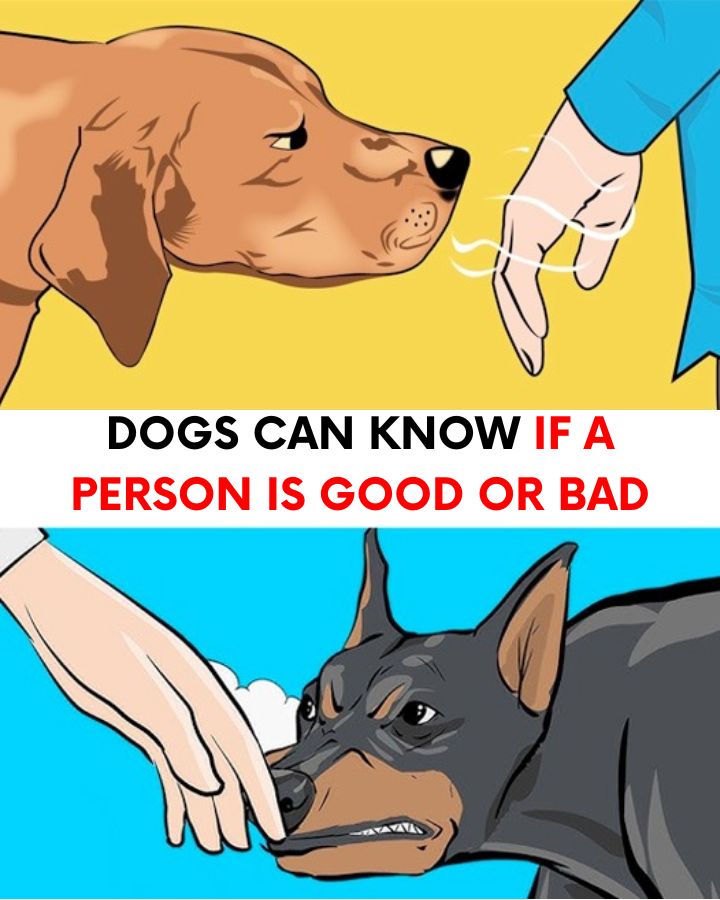ADVERTISEMENT
Are Dogs Naturally Instinctive?
According to scientists, the answer appears to be yes. Behavioral studies suggest that our beloved canine companions can sense when someone has bad intentions. A deeper dive into the extraordinary sensory abilities of dogs reveals just how perceptive they truly are.
Dogs and Trustworthiness
Dogs may be even more intuitive than we realize. Research suggests that they can assess a person’s reliability. Japanese scientist Akiko Takaoka from Kyoto University conducted a formal experiment consisting of three phases to determine whether dogs could recognize deception.
In the first step, a dog’s owner pointed to a container holding food. The dog followed the signal and found the treat. Next, the owner pointed to an empty container. The dog, expecting food, approached but found nothing.
This demonstrated that dogs rely on human gestures to locate objects. However, when these gestures proved unreliable, the dogs showed signs of confusion and unease.
By the third trial, the dogs no longer obeyed the misleading instructions. This suggested that they had lost trust in the deceptive human. The experiment, involving 34 dogs, concluded that canines evaluate a person’s credibility based on past interactions.
Researchers plan to extend this study to wolves, a close relative of dogs, to explore whether this ability is unique to domesticated animals.
Dog’s Empathy
Dogs also appear to monitor their owners’ social interactions. Another experiment involved strangers asking for help on the street. Afterward, those who assisted the dog’s owner attempted to feed the dog.
The results were intriguing—dogs willingly accepted food from those who had helped their owners. Surprisingly, they also accepted food from neutral bystanders who had not interfered. However, they outright rejected food from individuals who had been rude or aggressive toward their owners.
Moreover, dogs can interpret human gestures and facial expressions. A study published in Biology Letters by the British Royal Society found that dogs can discern emotions based on our tone of voice and facial cues.
They are the only non-human species capable of recognizing both joy and anger in humans. “Our research demonstrates that dogs integrate multiple sensory inputs to form a coherent understanding of human and canine emotions,” explains Kun Guo, a researcher at the University of Lincoln.
The Benefits of Animal Therapy
Animal-assisted therapy, commonly known as pet therapy, offers numerous advantages for human well-being. Guided by a pet therapist who facilitates interaction, these sessions create a natural and judgment-free connection between humans and animals. The result is a deeply relaxing and rewarding experience.
For both adults and children, spending time with animals can enhance overall quality of life and even help address psychological challenges. The benefits of this therapy include:
Encouraging social interaction and communication
Reducing stress, anxiety, and loneliness
Boosting memory and cognitive function
Enhancing motor skills, as well as spatial and temporal awareness
Supporting language development and cognitive processing
Promoting emotional expression
Strengthening self-esteem and confidence
Helping individuals adjust to new environments
From detecting dishonesty to offering emotional support, dogs are more than just pets—they are remarkably perceptive and compassionate companions.
Why do dogs ba.rk and bi.te some people but not others? There’s always a reason!
1. Dogs ba.rk because they are encoutering something new
One of the most common reason is that dogs ba.rk because they are experiencing new things. Some less friendly dogs will ba.rk as soon as they meet strangers because there are too many new things about that person for them: such as a new scent, new behavior… For dogs, new things make them cautious and are perceived as potential threats.
2. Certain faces or behaviors make dogs bark more easily
In reality, there are some human traits that make dogs more excited:
When you wear accessories like a hooded hat or sunglasses: This reduces the dog’s ability to observe your face, making them feel threatened.
If you have a lot of facial hair.
If you are tall and muscular, it can scare them.
Your voice is too deep and loud.
You point your fingers or stare directly into the dog’s eyes.
You smoke in front of them. However, dogs are not bothered by the smell of shampoo, perfume, or deodorant…
Image for illustrative purpose only.
Continued on Next Page
ADVERTISEMENT
